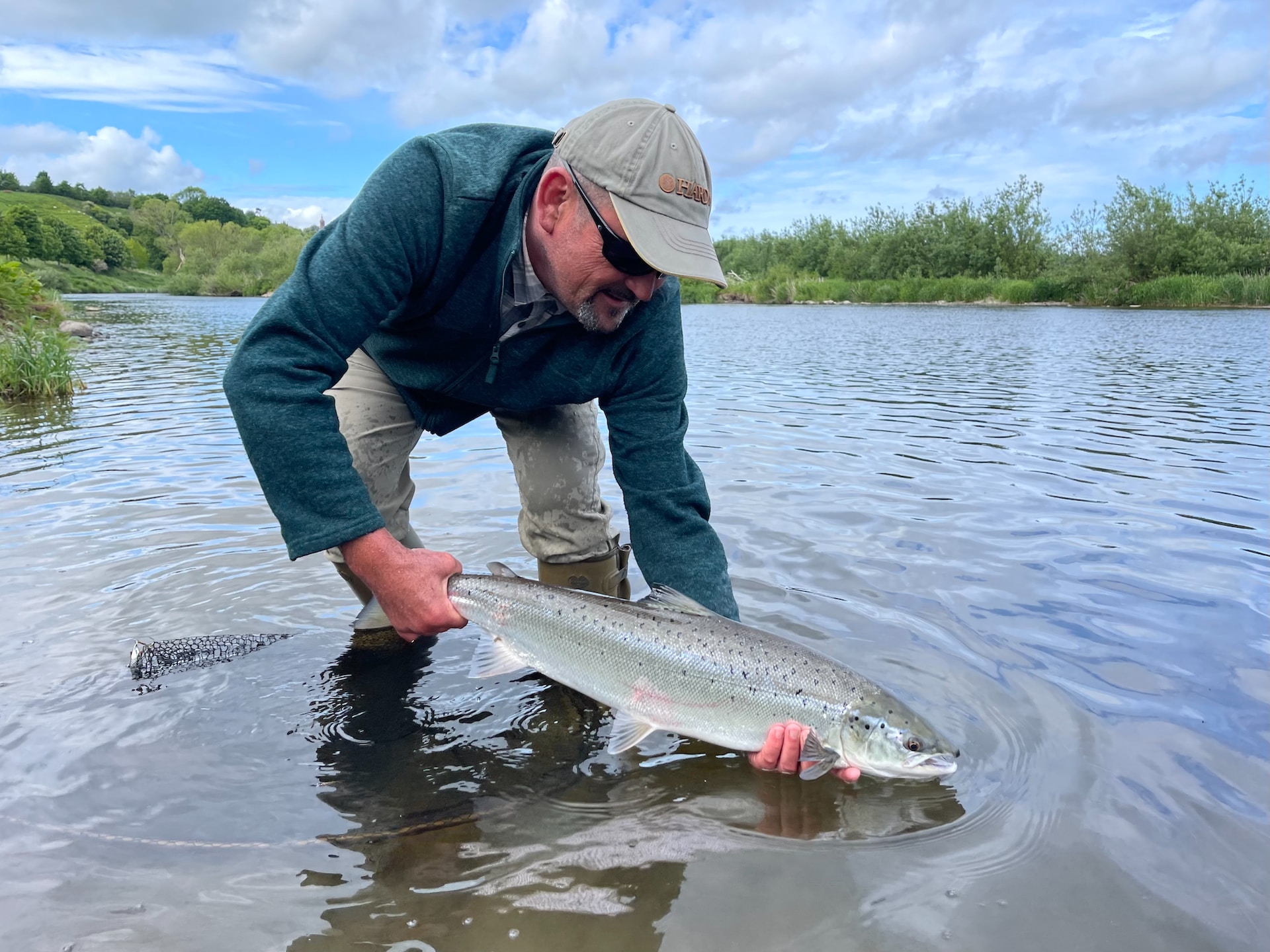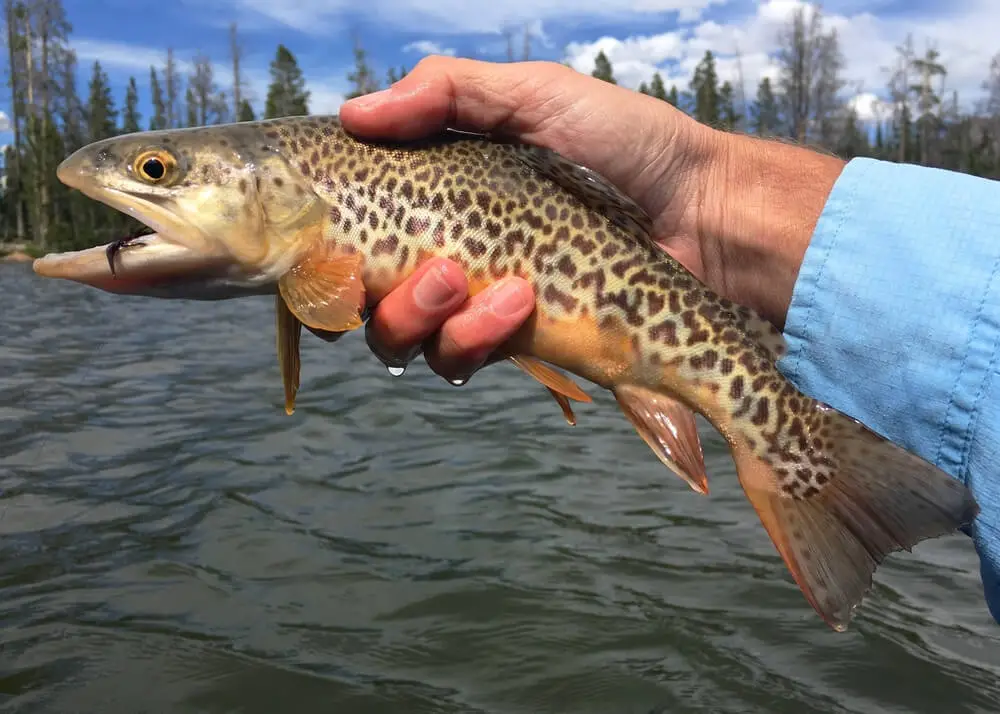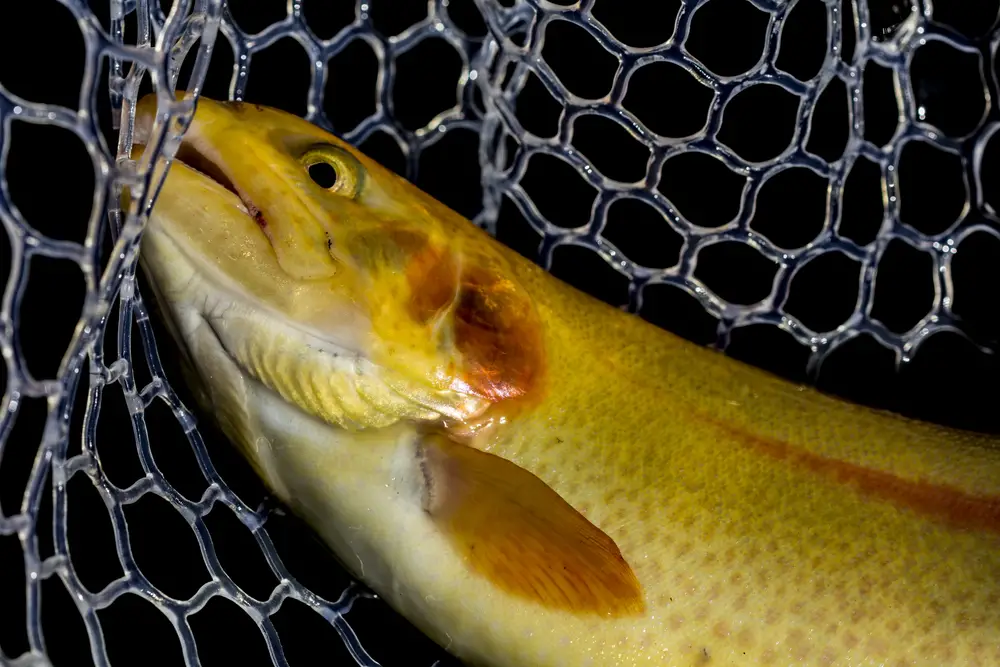Dolly Varden Trout: All You Need to Know about this Fascinating Species
Dolly Varden trout, Salvelinus malma, is a species of salmonid fish that inhabits cold-water tributaries of the Pacific Ocean in Asia and North America. The fish is named after a character in Charles Dickens’ novel “Barnaby Rudge,” and is often confused with its close relative, the bull trout. The two species were confirmed to be distinct in 1978.
Dolly Varden trout are known for their striking colors, with olive-green backs and yellow spots along their sides. They are also known for their resilience, as they can survive in a variety of habitats, from small streams to large rivers. These fish are often targeted by anglers for sport fishing, and are also important to the ecosystems in which they live, serving as both predator and prey.
Despite their importance, Dolly Varden trout populations have faced threats from human activities such as overfishing, habitat destruction, and pollution. Conservation efforts have been put in place to protect these fish and their habitats, including regulations on fishing and habitat restoration projects. Understanding the biology and ecology of Dolly Varden trout is crucial for their conservation and the health of the ecosystems in which they live.
Taxonomy and Classification
Scientific Name
The Dolly Varden Trout belongs to the genus Salvelinus and is scientifically known as Salvelinus malma. It is a member of the family Salmonidae, which also includes salmon, char, and whitefish.
Subspecies
There are several subspecies of Dolly Varden Trout that are found in different regions. The subspecies are classified based on their geographic location and physical characteristics. Some of the subspecies of Dolly Varden Trout are:
- Salvelinus malma malma: This subspecies is found in the coastal regions of Alaska and British Columbia. It has a dark greenish-blue back with silver sides and a white belly. The spots on its body are small and evenly distributed.
- Salvelinus malma lordi: This subspecies is found in the northern regions of Alaska and Canada. It has a dark greenish-blue back with silver sides and a white belly. The spots on its body are large and widely spaced.
- Salvelinus malma krascheninnikova: This subspecies is found in the Kamchatka Peninsula in Russia. It has a dark greenish-blue back with silver sides and a white belly. The spots on its body are small and evenly distributed.
Overall, the Dolly Varden Trout is a fascinating species that has captured the attention of anglers and scientists alike. Its taxonomy and classification provide a framework for understanding the different subspecies and their unique characteristics.
Also Read: Brook Trout Species Information: Characteristics, Habitat, and Diet
Habitat and Distribution
Geographical Range
The Dolly Varden trout (Salvelinus malma) is a species of salmonid fish that is native to Asia and North America. The species is widely distributed in Alaska and can be found in most coastal waters in the state. Two forms or sub-species of Dolly Varden have been described in Alaska. In the continental United States, the species only occurs naturally in the coastal drainages of northwestern Washington from the Canadian border south through Puget Sound and south on the Olympic Peninsula to the Quinault River.
Preferred Habitats
Dolly Varden trout prefer to live in clear, cold water with a temperature range of 4-14°C. They are typically found in streams, rivers, and lakes, although they are known to migrate to the ocean in some regions. The species is known to occupy a variety of habitats, including small headwater streams, large rivers, and deep lakes. They are often found in areas with abundant cover such as undercut banks, log jams, and boulders.
The species is known to be sensitive to changes in water quality and habitat degradation. Dolly Varden trout populations can be negatively impacted by human activities such as mining, logging, and development. As a result, conservation efforts are necessary to protect the species and its habitats.
Physical Characteristics
Appearance
Dolly Varden trout is a species of salmonid ray-finned fish, which is native to cold-water tributaries of the Pacific Ocean in Asia and North America. The fish has a slender body with a slightly forked tail. The coloration of the fish varies depending on the environment and season.
During the spawning season, the fish has a bright red-orange coloration with dark spots on its back and sides. The belly of the fish is usually white or silver, and their fins are usually red or orange.
Size and Lifespan
The size of the Dolly Varden trout varies depending on the habitat and subspecies. The fish can grow up to 27 pounds in Alaska, while in other regions, they can reach up to 20 pounds. The average length of the fish ranges from 12 to 24 inches. The lifespan of the Dolly Varden trout is around 4-6 years, but some individuals can live up to 10 years.
The fish has a relatively slow growth rate, and it takes several years to reach maturity. The females of the species are usually larger than the males. The Dolly Varden trout is a cold-water fish, and it prefers water temperatures between 45-55 degrees Fahrenheit. The fish is known for its resilience and ability to adapt to different environments.
Conservation and Threats
Conservation Status
The Dolly Varden trout is not currently listed as an endangered species by the International Union for Conservation of Nature (IUCN). However, some populations of Dolly Varden trout have been identified as “Species of Special Concern” by the US Fish and Wildlife Service, and are protected under the Endangered Species Act.
Environmental Threats
Dolly Varden trout populations are subject to a number of environmental threats that can impact their survival. These include:
- Habitat loss and degradation due to human activities such as mining, urbanization, and timber harvest
- Overfishing and human harvest
- Climate change, which can alter water temperatures and flow regimes and impact the distribution and abundance of prey
- Migratory barriers, such as dams and culverts, which can prevent fish from accessing important spawning and rearing habitats
Efforts to protect and conserve Dolly Varden trout populations include habitat restoration and protection, fish passage improvement, and regulations on fishing and harvest. Additionally, research on the impacts of climate change and other environmental stressors can help inform management decisions aimed at protecting this unique and important species.




